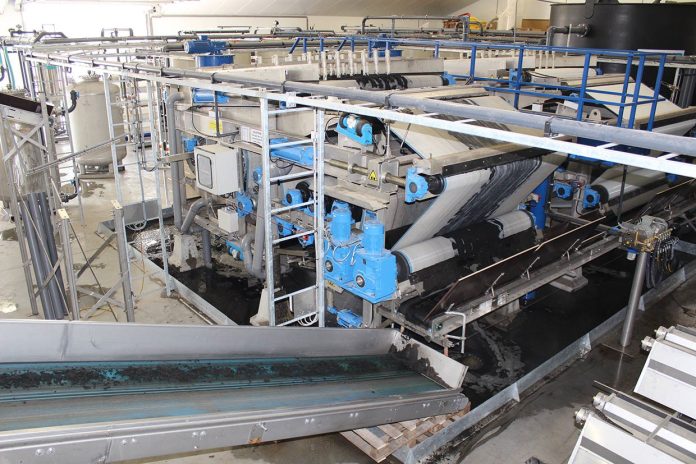WELTEC BIOPOWER has introduced “WELTEC BLUE WATER” as the new name for its slurry and digestate treatment systems, replacing Kumac. This change reflects the company’s commitment to meeting international market demands. To date, 17 plants have been commissioned worldwide, with the first WELTEC BLUE WATER facility in Germany operational since March 2024.
The treatment process begins with dewatering the digestate using a belt press, producing solids with approximately 30% dry matter content. These solids can be utilized or sold as fertilizer, compost, animal bedding, or biogas substrate. Through multiple automated processing steps, the output materials are transformed into compost, fertilizer, animal bedding, and biogas substrate, with up to 60% of the water being dischargeable, depending on the input material. The name “WELTEC BLUE WATER” reflects both the increasing global demand for these solutions and the system’s capability to produce substantial amounts of water. Currently, additional plants are being constructed and are at advanced stages of development in Europe, Asia, and the USA, with initial references in Japan and Spain nearing completion. This technology is particularly appealing for farms in regions with high liquid manure supplies or water scarcity, such as Denmark and Spain. In Europe, investments are supported by the European Agricultural Fund for Rural Development (FEADER).
The WELTEC BLUE WATER system is also effective for separating nitrogen and returning water to the biogas process, allowing for the use of nitrogen-rich input materials like poultry manure. Notably, this system does not require thermal energy and transforms excreted solids into high-quality fertilizer.
WELTEC BLUE WATER operates through a multi-stage process to separate solids from liquids, with the distribution of separated materials varying based on the dry matter content of the input. An independent study of the treatment plant in Deurne, Netherlands, by the Lower Saxony Chamber of Agriculture in 2015 revealed a breakdown of approximately 55% dischargeable water, 25% solids, and 20% liquid nutrient concentrate. At the beginning of the process, additives are incorporated to enhance efficiency by flocculating finer components, facilitating separation and minimizing odor emissions. The fermentation residue is then dewatered using a belt press, producing solid material that can be used or sold as fertilizer, compost, or animal bedding. The system is modular and scalable, suitable for operations starting from 50,000 tons annually.
The liquid separated from the belt press undergoes aeration in a flotation tank, where particles and suspended matter settle to the bottom. This sludge is reintegrated into the process. In the final stage, a multi-stage reverse osmosis system removes up to 99% of dissolved salts and nutrients, creating a nutrient concentrate that serves as an easily transportable liquid fertilizer. The remaining treated water can be used or returned to the water cycle, resulting in a potential 60% reduction in storage requirements for fermentation residues.
Overall, WELTEC BLUE WATER is designed for a wide range of users, including pig and cattle farmers, biogas plant operators, and industrial companies.



